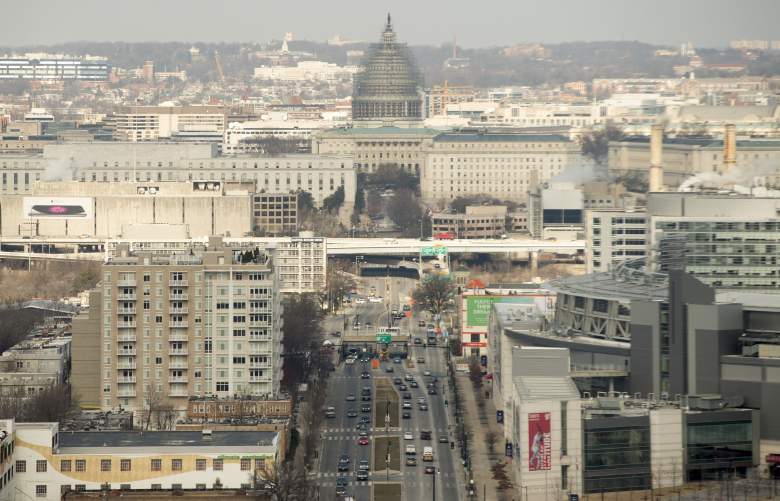
Millions of people are looking up into the sky to document the first total eclipse in the United States in 99 years.
“On Monday, August 21, 2017, all of North America will have a solar eclipse. The Moon will cover at least part of the Sun for 2 to 3 hours,” the American Astronomical Society explains. “Halfway through, anyone within a narrow path from Oregon to South Carolina will experience a brief total eclipse. The Moon will completely block the Sun’s bright face for up to 2 minutes 40 seconds. Day will turn into night, and (weather permitting) one of nature’s most awesome sights will become visible: the Sun’s diaphanous outer atmosphere, or corona.”
The eclipse started in Oregon and is making its way toward South Carolina. That means many cities on the East Coast will get to experience a total, or partial eclipse.
In the Washington D.C. area, the partial solar eclipse started at 1:17 p.m. Eastern and will peak at 2:42 p.m. It will move out of the city at 4:01 p.m., The Washington Post reported, lasting 2 hours, 43 minutes.
At its peak, the moon will be covering 81.1 percent of the sun in the area. Unlike areas on the total eclipse path, the Washington area will not go dark for a few minutes, and it may be difficult to notice anything if not paying attention.
However, in order to watch it safety, you need certified eclipse glasses. You should never look directly at the sun, and the same rings true for eclipses. Doing so could cause significant damage to your eyesight.
In order to see a full view of the eclipse, however, promising weather must be had. And that seems to be the case for the D.C. metro area, which has temperatures of around 90 degrees, according to The Weather Channel. However, clouds may interrupt some of the peak viewing times.